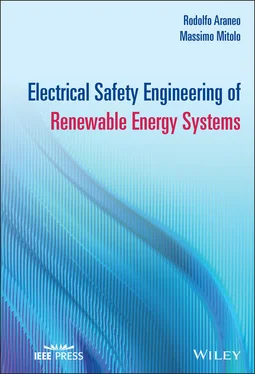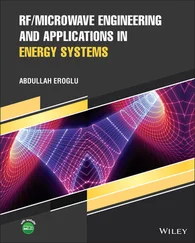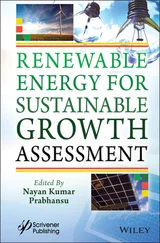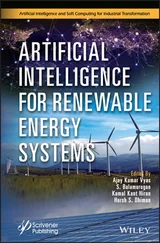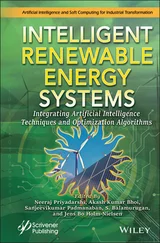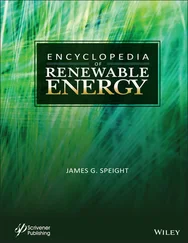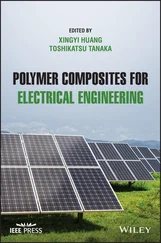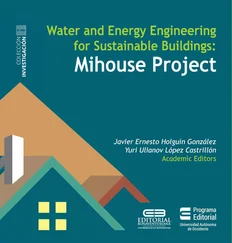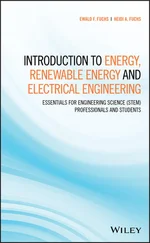Rodolfo Araneo - Electrical Safety Engineering of Renewable Energy Systems
Здесь есть возможность читать онлайн «Rodolfo Araneo - Electrical Safety Engineering of Renewable Energy Systems» — ознакомительный отрывок электронной книги совершенно бесплатно, а после прочтения отрывка купить полную версию. В некоторых случаях можно слушать аудио, скачать через торрент в формате fb2 и присутствует краткое содержание. Жанр: unrecognised, на английском языке. Описание произведения, (предисловие) а так же отзывы посетителей доступны на портале библиотеки ЛибКат.
- Название:Electrical Safety Engineering of Renewable Energy Systems
- Автор:
- Жанр:
- Год:неизвестен
- ISBN:нет данных
- Рейтинг книги:5 / 5. Голосов: 1
-
Избранное:Добавить в избранное
- Отзывы:
-
Ваша оценка:
- 100
- 1
- 2
- 3
- 4
- 5
Electrical Safety Engineering of Renewable Energy Systems: краткое содержание, описание и аннотация
Предлагаем к чтению аннотацию, описание, краткое содержание или предисловие (зависит от того, что написал сам автор книги «Electrical Safety Engineering of Renewable Energy Systems»). Если вы не нашли необходимую информацию о книге — напишите в комментариях, мы постараемся отыскать её.
A reference to designing and developing electrical systems connected to renewable energies Electrical Safety Engineering of Renewable Energy Systems
Electrical Safety Engineering of Renewable Energy Systems
Electrical Safety Engineering of Renewable Energy Systems — читать онлайн ознакомительный отрывок
Ниже представлен текст книги, разбитый по страницам. Система сохранения места последней прочитанной страницы, позволяет с удобством читать онлайн бесплатно книгу «Electrical Safety Engineering of Renewable Energy Systems», без необходимости каждый раз заново искать на чём Вы остановились. Поставьте закладку, и сможете в любой момент перейти на страницу, на которой закончили чтение.
Интервал:
Закладка:
An alternating voltage of approximately the system frequency is applied between the facility ground electrode and an auxiliary ground electrode, located far enough to guarantee separate zones of influence (e.g., 4 or 5 times the maximum dimension of the facility ground electrode). A test current im is injected into the facility grounding system, which causes a measurable ground potential rise.
The test current should be so high that the measured touch voltage, referred to as the test current, is greater than possible disturbance voltages; according to EN 50522, this may be ensured for test currents of at least 50 A. Always according to EN 50522, the measuring electrodes for the simulation of the feet, connected in parallel, must have a total area of 400 cm 2, lie on the ground with a minimum total force of 500 N, and placed at a distance of 1 m from the equipment of the installation, or from an EXCP. During the test, the auxiliary ground electrode may assume a dangerous ground potential rise, and therefore should be guarded.
The tip-electrode for the simulation of the hand touching the equipment, or an EXCP, must be capable of penetrating a paint coating (not insulation).
The reading of the voltmeter, which is referred to as the test current, must then be scaled up by multiplying it by the ratio of the effective ground-fault current provided by the utility to the test current.
The touch voltage measurement should be performed in the substation, as a sampling test, keeping in mind that higher magnitudes for the touch voltages may be found around the edge of the ground grid.
References
1 1Moreno, B., and López, A.J.(2008). The effect of renewable energy on employment. The case of Asturias (Spain). Renewable and Sustainable Energy Reviews 12 (3): 732–751.
2 2 Bulavskaya, T., and Reynès, F.(2018). Job creation and economic impact of renewable energy in the Netherlands. Renewable Energy 119: 528–538. doi:9.
3 3Sooriyaarachchi, T.M., Tsai, I.-T., El Khatib, S., Farid, A.M., and Mezher, T.(2015). Job creation potentials and skill requirements in, PV, CSP, wind, water-to-energy and energy efficiency value chains. Renewable and Sustainable Energy Reviews 52: 653–668.
4 4Gammon, T., Lee, W., and Intwari, I.(2019). Reframing our view of workplace ‘electrical’ injuries. IEEE Transactions on Industry Applications 55 (4): 4370–4376.
5 5Crow, D.R., Liggett, D.P., and Scott, M.A.(2017). Changing the electrical safety culture. 2017 IEEE IAS Electrical Safety Workshop (ESW), 1–7.
6 6Neitzel, D.K.(2016). Electrical safety by design and maintenance. 2016 IEEE Pulp, Paper Forest Industries Conference (PPFIC), 6–13.
7 7Mathe, L., Sera, D., Spataru, S.V., Kopacz, C., Blaabjerg, F., and Kerekes, T.(2015). Firefighter safety for PV systems: A solution for the protection of emergency responders from hazardous dc voltage. IEEE Industry Applications Magazine 21 (3): 75–84.
8 8Gordon, L.B., Cartelli, L., and Graham, N.(November 2018). A complete electrical shock hazard classification system and its application. IEEE Transactions on Industry Applications 54 (6): 6554–6565.
9 9John Cadick, P.E., Mary Capelli-Schellpfeffer M.P.A., M.D., Neitzel, C.P.E.D.K., and Winfield, A.(2012). Electrical Safety Handbook, 4th ed. New York: McGraw-Hill Education.
10 10Winfield, A., Capelli-Schellpfeffer, M., Neitzel, D., and Cadick, J.(2012). Electrical Safety Handbook, 4th ed. McGraw-Hill Professional.
11 11Rachford, J.(2020). Explaining ventricular fibrillation in simple electrical terminology. 2020 IEEE IAS Electrical Safety Workshop (ESW), 1–3.
12 12Freschi, F., Guerrisi, A., Tartaglia, M., and Mitolo, M.(2013). Numerical simulation of heart-current factors and electrical models of the human body. IEEE Transactions on Industry Applications 49 (5): 2290–2299.
13 13Freschi, F.,and Mitolo, M.(2017). Currents passing through the human body: The numerical viewpoint. IEEE Transactions on Industry Applications 53 (2): 826–832.
14 14De Santis, V., Beeckman, P.A., Lampasi, D.A., and Feliziani, M.(February 2011). Assessment of human body impedance for safety requirements against contact currents for frequencies up to 110 MHz. IEEE Transactions on Biomedical Engineering 58 (2): 390–396.
15 15Jiang, H.,and Brazis, P.W.(2018). Experiments of DC human body resistance I: Equipment, setup, and contact materials. 2018 IEEE Symposium on Product Compliance Engineering (ISPCE), 1–6.
16 16Boron, S., Heyduk, A., Joostberens, J., and Pielot, J.(2016). Empirical model of a human body resistance at a hand-to-hand DC flow. Elektron. Ir Elektrotechnika 22 (4): 26–31.
17 17Lavrova, O., Quiroz, J.E., Flicker, J., and Gooding, R.(2017). Updated evaluation of shock hazards to firefighters working in proximity of PV systems. 2017 IEEE 44th Photovoltaic Specialist Conference (PVSC), 1280–1285.
18 18Alam, M.K., Khan, F., Johnson, J., and Flicker, J.(2015). A comprehensive review of catastrophic faults in PV arrays: Types, detection, and mitigation techniques. IEEE Journal of Photovoltaics 5 (3): 982–997.
19 19Qiu, L.,and Wang, C.(2011). Research on the relationship between skin burn and action time. Proceedings 2011 International Conference on Human Health and Biomedical Engineering, 1201–1203.
20 20Yen, M., Colella, F., Kytomaa, H., Allin, B., and Ockfen, A.(2020). Contact burn injuries: Part I: The influence of object thermal mass. 2020 IEEE Symposium on Product Compliance Engineering - (SPCE Portland), 1–5.
21 21Yen, M., Colella, F., Kytomaa, H., Allin, B., and Ockfen, A.(2020). Contact burn injuries: Part II: The influence of object shape, size, contact resistance, and applied heat flux. 2020 IEEE Symposium on Product Compliance Engineering - (SPCE Portland), 1–6.
22 22He, J., Zeng, R., and Zhang, B.(2013). Fundamental concepts of grounding. In: Methodology and Technology for Power System Grounding, 1–26. IEEE, Wiley.
23 23Mitolo, M. and Liu, H.(2016). Touch voltage analysis in low-voltage power systems studies. IEEE Transactions on Industry Applications 52 (1): 556–559.
24 24 Laukamp, H. and Bopp, G.(July 1996). Residential PV systems—electrical safety issues and installation guidelines. Progress in Photovoltaics: Research and Applications 4 (4): 307–314.
25 25 Hernández, J.C. and Vidal, P.G.(2009). Guidelines for protection against electric shock in PV generators. IEEE Transactions on Energy Conversion 24 (1): 274–282.
26 26 Kontargyri, V.T., Gonos, I.F., and Stathopulos, I.A.(November 2015). Study on wind farm grounding system. IEEE Transactions on Industry Applications 51 (6): 4969–4977.
27 27Karegar, H.K. and Arabi, M.(2010). New wind turbine grounding system to reduce step touch voltage. 2010 IEEE International Conference on Power and Energy, 168–171.
28 28Colella, P., Pons, E., and Tommasini, R.(2017). Dangerous touch voltages in buildings: The impact of extraneous conductive parts in risk mitigation. Electric Power Systems Research 147: 263–271.
29 29Mauromicale, G., Raciti, A., Rizzo, S.A., Susinni, G., Parise, G., and Parise, L.(2019). E-mobility: Safety, service continuity and penetration of charging systems. 2019 AEIT International Conference of Electrical and Electronic Technologies for Automotive (AEIT AUTOMOTIVE), 1–6.
30 30Mitolo, M. and Bajzek, T.J.(2018). Measuring the electrical safety in low-voltage distribution systems. 2018 IEEE/IAS 54th Industrial and Commercial Power Systems Technical Conference (I CPS), 1–4.
31 31Kosztaluk, R., Dinkar Mukhedka, R., and Gervais, Y.(November 1984). Field measurements of touch and step voltages. IEEE Transactions on Power Systems PAS-103 (11): 3286–3294.
32 32 Meliopoulos, A.P.S., Patel, S., and Cokkinides, G.J.(1994). A new method and instrument for touch and step voltage measurements. IEEE Transactions on Power Delivery 9 (4): 1850–1860.
Читать дальшеИнтервал:
Закладка:
Похожие книги на «Electrical Safety Engineering of Renewable Energy Systems»
Представляем Вашему вниманию похожие книги на «Electrical Safety Engineering of Renewable Energy Systems» списком для выбора. Мы отобрали схожую по названию и смыслу литературу в надежде предоставить читателям больше вариантов отыскать новые, интересные, ещё непрочитанные произведения.
Обсуждение, отзывы о книге «Electrical Safety Engineering of Renewable Energy Systems» и просто собственные мнения читателей. Оставьте ваши комментарии, напишите, что Вы думаете о произведении, его смысле или главных героях. Укажите что конкретно понравилось, а что нет, и почему Вы так считаете.
